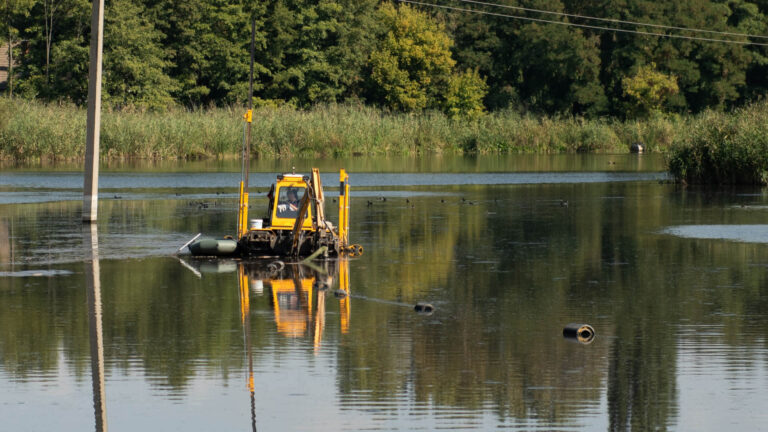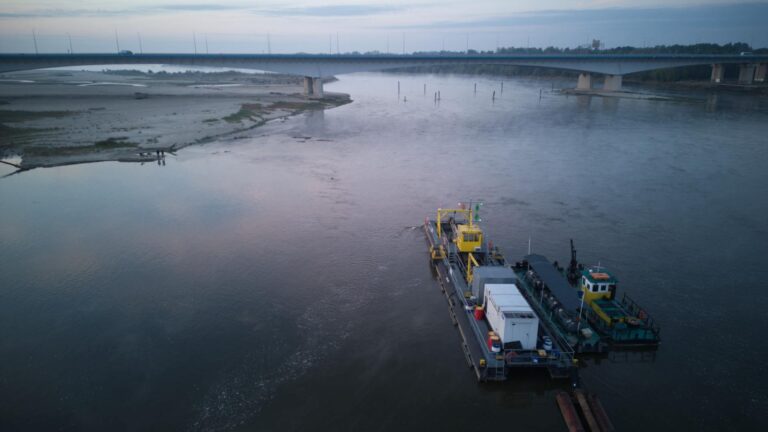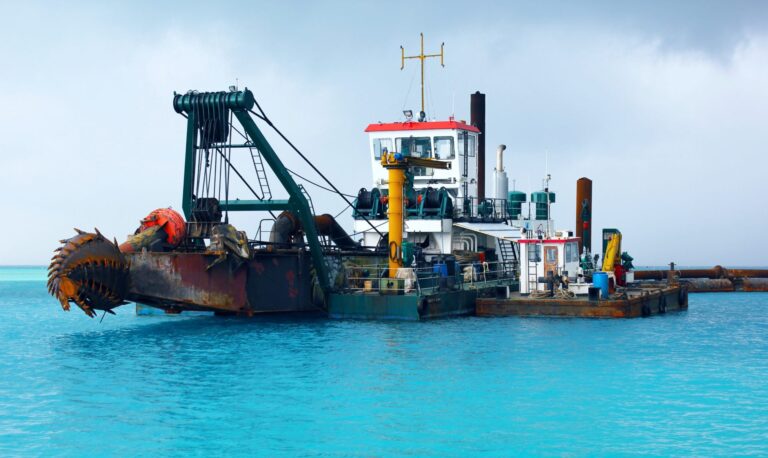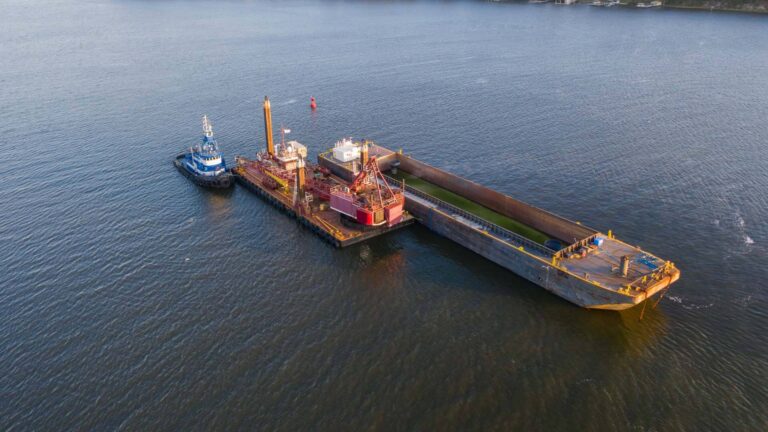Small dredging equipment is transforming how Libya manages its industrial, municipal, and environmental projects. As the country’s development accelerates, these compact yet powerful systems have become essential for maintaining waterways, restoring ponds, and controlling sediment buildup. Their portability, precision, and cost-effectiveness make them the go-to solution for operations where large dredgers are either impractical or too costly to deploy. From coastal maintenance and mining operations to inland water management, small dredging equipment delivers the versatility and control needed for efficient, targeted sediment removal across diverse terrains.
In these applications, performance consistency is crucial. Unplanned downtime, equipment inefficiency, or excessive wear can significantly delay projects and inflate operational costs. By ensuring proper operation and timely troubleshooting of small dredging equipment, operators can extend service life, reduce energy consumption, and maintain steady productivity even under challenging conditions. For procurement heads and project contractors, this reliability directly translates into measurable ROI through reduced maintenance costs and predictable production rates.
Safety and lifecycle cost control are equally critical. In the Libyan context, where environmental and site conditions range from coastal harbors to arid inland reservoirs, dredging equipment must perform reliably under fluctuating water levels, temperature extremes, and varying sediment conditions. A proactive maintenance culture, supported by accurate diagnostics and troubleshooting, helps minimize breakdowns and optimize mechanical performance, thereby reducing the risk of costly downtime.
Understanding the operational factors that affect performance is key. The efficiency of small dredging equipment is directly affected by three primary variables: site conditions, the nature of the material being dredged, and the project’s scale and objectives. Harsh marine conditions, abrasive sand, or high-silt content can rapidly degrade components if the system is not properly calibrated. By aligning equipment specifications with environmental realities, operators can achieve sustainable performance outcomes and ensure that each dredging cycle delivers maximum yield.

Core Systems and Functional Components of Small Dredging Equipment
Efficient operation begins with understanding how every component in small dredging equipment interacts within the system. At its core, a dredge comprises several interdependent parts, each designed to perform specific mechanical, hydraulic, and sediment-handling functions.
The system’s central component —the pump —generates the suction and discharge pressures required to move water and sediment down the dredge pipeline. How well material can be transported over different distances and at different heights depends on the pump’s selection and maintenance. Together with the pump, the cutter head or suction nozzle agitates and loosens silt, enabling steady material intake even in rocky or compacted terrain.
The suction and discharge lines, which move materials from the excavation site to the disposal site, support these main parts. The overall efficiency of these pipelines is strongly influenced by their diameter, length, and layout; old or undersized lines can reduce flow rate and increase friction losses. Floatation modules keep you buoyant and stable, especially when the water is shallow or uneven. High-quality floats reduce mechanical stress, ensure steady flow, and stop pipeline drooping.
The hydraulic control system coordinates motion and pressure across all moving parts, including the cutter, swing arms, and spuds. It ensures precise control during dredging operations and prevents overloading of the pump or motor. In modern small dredging equipment, hydraulic systems are often integrated with real-time monitoring and automation features that allow operators to adjust flow rates and pressure settings based on material conditions.
Reliability arises from harmony rather than from separate performance in these interconnected systems. Reduced production or even mechanical failure may result from a problem in a single subsystem, such as a partially blocked suction line or reduced hydraulic pressure. Each component should be regularly inspected and calibrated to ensure the system functions well across a variety of site conditions, including those found in Libya’s inland and coastal water habitats.
While all packed dredges share the same fundamental design principles, the configuration and durability of components vary by application. Gold dredging equipment, for example, is planned to handle high concentrations of coarse particles and dense material. It typically features heavy-duty pumps, reinforced suction hoses, and precision recovery systems designed for capturing fine sediment. The focus here is on durability and sediment control, as gold recovery requires a continuous flow with minimal material loss.
By contrast, small pond dredging systems are designed for gentle sediment removal in confined or shallow areas, such as irrigation reservoirs, treatment lagoons, or stormwater ponds. These systems prioritize portability and minimal environmental disruption. Lightweight pontoons, flexible suction hoses, and low-emission engines make them ideal for municipal or agricultural projects. In regions like Libya, small pond dredging plays an important role in maintaining irrigation efficiency, preventing silt buildup, and supporting sustainable water resource management.
Despite their differences, both gold dredging equipment and small pond dredging systems rely on the same maintenance fundamentals: steady flow performance, component integrity, and prompt troubleshooting. Understanding how each component contributes to overall system efficiency helps operators anticipate issues before they escalate, ensuring that small dredging equipment continues to perform dependably across a wide range of industrial and environmental projects.
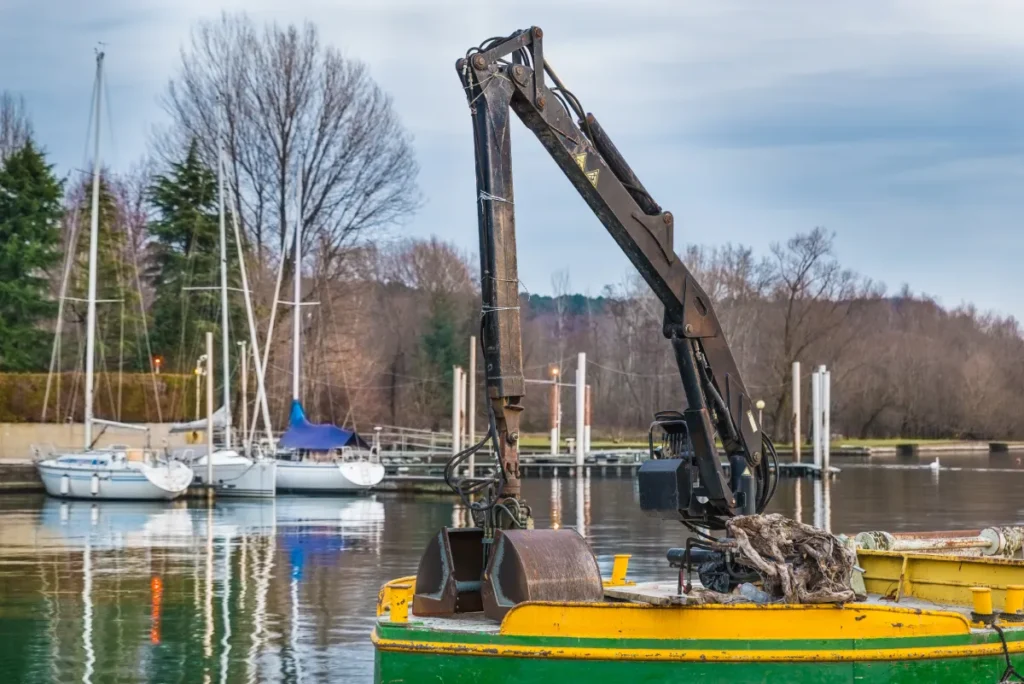
Common Operational Issues and Their Root Causes
Even the most advanced small dredging equipment can encounter technical challenges if not properly operated and maintained. Identifying early signs of inefficiency, wear, or system imbalance helps operators prevent costly breakdowns and extend equipment lifespan. Below are the most frequent operational issues affecting small dredging equipment, along with their underlying causes and practical troubleshooting strategies.
Reduced Pump Performance or Flow Rate
A drop in flow rate or pumping output is one of the earliest indicators of inefficiency in small dredging equipment. Common causes include suction blockage, air entrainment, worn impellers, or improperly sized hoses. A partially clogged suction line can restrict flow, while air entering the system disrupts suction stability.
Diagnosis begins by checking suction and discharge pressures, evaluating the suction head, and comparing actual flow readings with expected values. In gold dredging equipment, the high concentration of heavy material, such as gravel and dense sand, often accelerates impeller wear, reducing head pressure and discharge efficiency.
Corrective actions include flushing or cleaning intake lines, replacing liners or impellers, and ensuring that suction hoses are the correct diameter and length. For small pond dredging operations, periodic inspection is essential because organic matter, such as leaves or silt, can easily accumulate in suction screens. Proper flow restoration minimizes downtime and ensures consistent dredge output.
Cavitation and Air Leaks
Cavitation occurs when vapor bubbles form and collapse inside the pump, creating vibration, noise, and long-term mechanical damage. In small dredging equipment, cavitation often results from excessive suction lift, high water temperature, or improper priming.
The condition is recognizable by rattling noises and fluctuating pressure readings. Air leaks can mimic similar symptoms, often caused by loose connections or damaged gaskets. For gold dredging equipment, cavitation risk increases when working in shallow water or at fluctuating water levels, where suction pressure varies rapidly.
Troubleshooting requires monitoring pressure differentials and performing acoustic checks to detect turbulence. Solutions include reducing suction lift, ensuring proper submersion of the suction inlet, and resealing fittings. In small pond dredging, where shallow conditions are common, maintaining stable suction depth and avoiding over-priming are essential to prevent air ingestion and cavitation.
Abrasive Wear and Material Erosion
Handling coarse materials significantly accelerates wear in small dredging equipment. Sediments containing sharp sand, gravel, or mineral particles erode internal surfaces and shorten component life. This is especially evident in gold dredging equipment, which routinely handles dense, abrasive mixtures under high-pressure conditions.
Wear-prone parts include impellers, pump casings, suction lines, and elbows. As erosion progresses, flow efficiency drops and vibration increases. To mitigate these effects, operators can install high-chrome-iron components, apply rubber linings, or apply ceramic coatings to critical surfaces.
In contrast, small pond dredging usually deals with fine silt or organic sediment, yet abrasive wear can still occur from accumulated sand near intakes. Regular cleaning, inspection, and realignment of suction assemblies ensure consistent hydraulic performance. In all cases, selecting appropriate construction materials and performing timely replacements directly affect the longevity and cost-effectiveness of small dredging equipment.
Overheating of Hydraulic Systems
Hydraulic systems power most motion and control functions in small dredging equipment, including swing arms, spuds, and cutter drives. Overheating, caused by insufficient cooling, low oil levels, or blocked filters, can severely reduce system reliability.
Thermal regulation becomes a major challenge in Libya’s hot climate. To prevent viscosity breakdown and pump cavitation, hydraulic oil temperature and pressure must be continuously monitored. Early contamination detection is aided by routine oil analysis.
In gold dredging, where hydraulic systems often power heavy-duty excavation tools, maintaining oil cleanliness and cooling efficiency is vital to sustain long work cycles. Similarly, small pond dredging units benefit from compact heat exchangers and automatic cut-off controls that prevent thermal overload. Regular maintenance of radiators, fans, and filters ensures consistent system pressure and long-term operational safety.
Electrical or VFD Malfunctions
Electrical control systems and Variable Frequency Drives (VFDs) play a critical role in regulating pump speed and optimizing energy efficiency in small dredging equipment. Faults in these systems, caused by voltage fluctuations, corrosion, sensor failure, or software errors, can result in erratic performance or total shutdown.
Before performing maintenance, operators should isolate the power supply and inspect control panels for moisture, corrosion, or loose wiring. Reviewing error codes and recalibrating frequency parameters can restore system stability. For gold dredging equipment, which frequently operates in damp, abrasive environments, robust enclosures and dust-proof seals protect electronic components from premature failure.
In small pond dredging systems, compact control units with simplified interfaces and real-time diagnostics improve operational reliability. Advanced dredging units equipped with smart control panels can detect anomalies such as phase imbalance, overheating, or frequency spikes, allowing operators to act before full system failure.
By integrating predictive diagnostics and remote monitoring, both gold dredging equipment and small-pond dredging setups achieve higher uptime and efficiency. The use of automated control systems not only enhances operational precision but also ensures that small dredging equipment maintains consistent performance across Libya’s demanding dredging conditions.
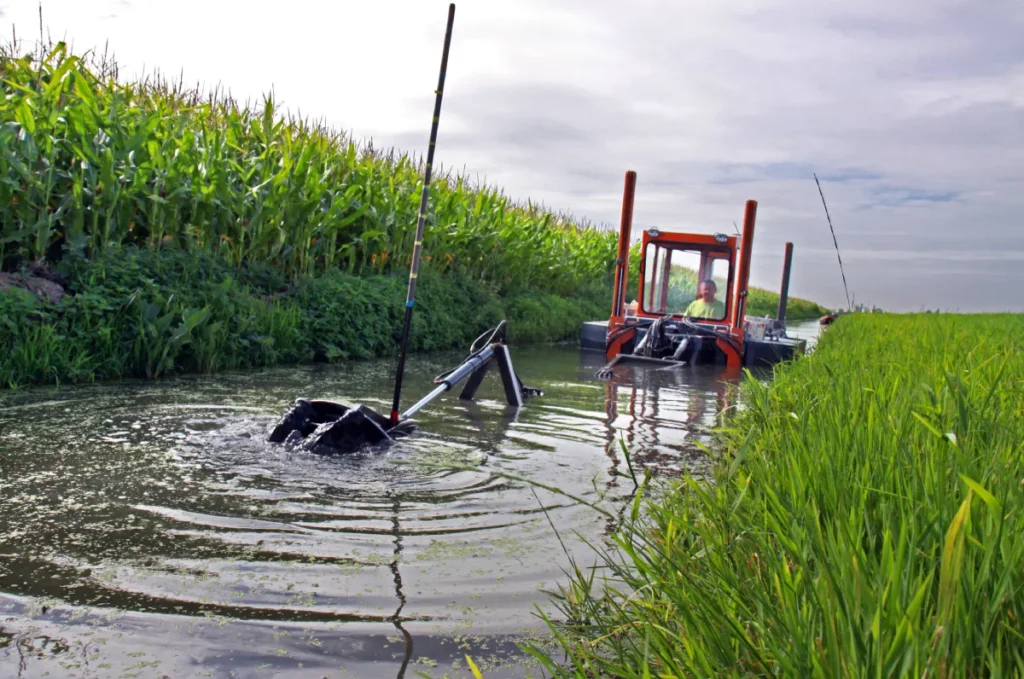
Environmental and Site-Related Challenges Affecting Performance
The operational success of small dredging equipment depends heavily on its adaptation to the environmental and site-specific conditions of each project. In Libya, dredging teams face diverse geographic and climatic conditions, from coastal harbors with fluctuating tides to inland ponds and reservoirs with high sediment concentrations and limited accessibility. Understanding and mitigating these influences is crucial to maintaining performance, minimizing wear, and ensuring cost-efficient dredging operations.
Suction efficiency and pump performance are directly impacted by site factors such as water depth, current velocity, silt density, and ambient temperature. Small dredging equipment sometimes needs to operate with a lower suction head in shallow or confined areas, which increases the risk of cavitation or blockage. High temperatures hasten oil deterioration in hydraulic systems, necessitating improved cooling techniques, while strong currents can collapse pipelines and floating platforms.
The nature of the dredged material is another determining factor. Clay, silt, sand, and gravel each present unique challenges for suction and discharge. Fine silt readily suspends but can lead to high turbidity, requiring precise flow control to prevent environmental disruption. In contrast, coarse sand and gravel increase frictional wear on pump casings and impellers. For gold dredging equipment, which often operates in mixed or abrasive deposits, balancing pump speed and cutter pressure is essential to maintaining consistent throughput without accelerating component erosion.
Accessibility issues also play a significant role, particularly in remote or shallow-water environments. Small pond dredging projects often occur in confined basins or agricultural reservoirs where maneuverability is limited. Deploying small dredging equipment in such areas requires compact pontoons, lightweight pipelines, and modular systems that can be assembled and transported with ease. Operators must account for limited maintenance access and ensure that spare parts and support services are readily available to avoid extended downtime.
Environmental compliance and turbidity control are increasingly critical in Libya’s dredging sector. Regulatory frameworks emphasize minimizing sediment disturbance, protecting aquatic habitats, and maintaining water quality. Modern small dredging equipment integrates turbidity curtains, fine-tuned suction control, and eco-friendly hydraulic systems to reduce environmental impact. Similarly, gold dredging equipment now incorporates sediment containment systems to prevent excessive silt dispersion during mineral recovery.
Operators may greatly increase efficiency and sustainability by matching equipment configuration and operating procedures with environmental conditions, currents, sediment composition, and site accessibility. Particularly in Libya’s diverse and difficult terrain, dependable service, compliance, and longer equipment life are ensured by modifying small dredging equipment to the exact environmental circumstances of each project.
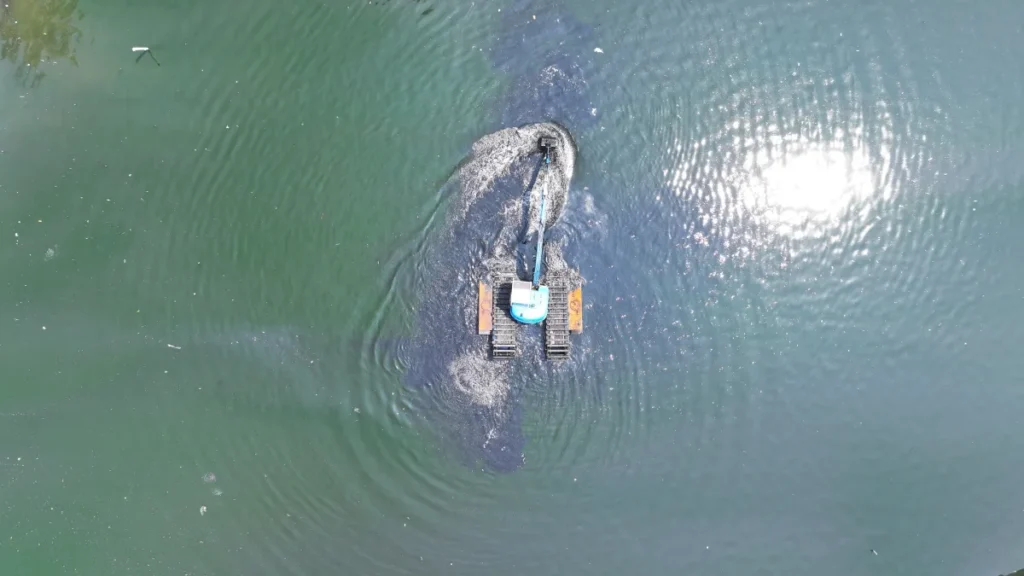
Building a Culture of Reliability in Dredging Operations
Reliability in small dredging equipment is achieved through consistency, consistent maintenance, monitoring, and attention to performance indicators. When operators establish a disciplined troubleshooting process, minor faults are identified early, preventing costly downtime and preserving system integrity.In Libya’s diverse dredging environments, this culture of reliability ensures that every project meets its production targets while maintaining environmental and operational safety. Both gold dredging equipment and small pond dredging systems benefit from preventive maintenance schedules, skilled personnel, and responsive local support. By emphasizing these practices, organizations can extend equipment lifespan, maintain efficiency under challenging conditions, and secure long-term value from every dredging investment.


